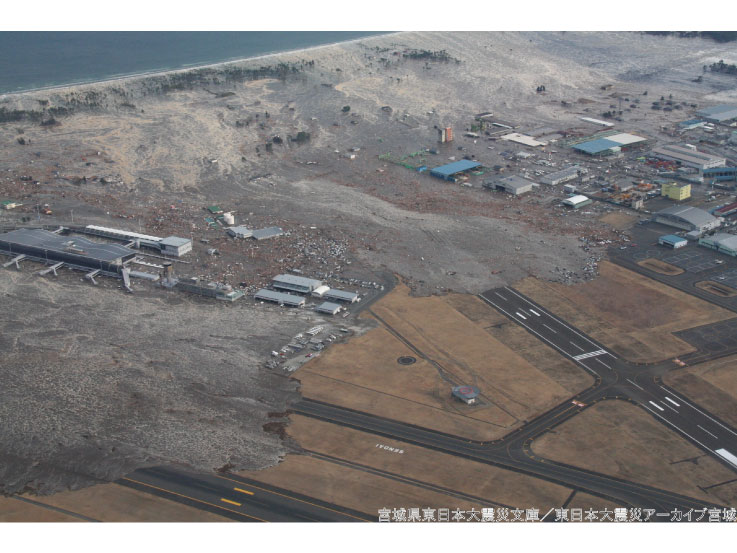The largest tsunami on record in Japan
The first tsunami wave struck at 3:18 PM on March 11, about 30 minutes after the earthquake.
The wave was extremely high along the coast of northeastern Japan. An automatic tide-gauge station in Ofunato City, Iwate Prefecture recorded a wave over 8.0 meters in height. A wave over 8.6 meters in height was recorded in Ayukawa in the city of Ishinomaki, Miyagi Prefecture. The recording of data was interrupted at many observation stations due to the earthquake and the destruction caused by the subsequent tsunami, but the tsunami waves that followed the first were estimated to have been even higher.
Surveys of inundation conditions were conducted after the disaster, and the resulting information has led to estimations of a wave of 16.7 meters in height at the fishing port of Shirahama in Ofunato City, Iwate Prefecture, and 19.6 meters in the Shizugawa area of Minamisanriku Town, Miyagi Prefecture.
The height of a tsunami wave is also revealed by its run-up, which marks the highest inland point reached by a tsunami wave. In Ryori Bay, Ofunato City, Iwate Prefecture, the run-up reached 40.1 meters, making this the largest tsunami on record in Japan.
Definitions of tsunami height and run-up height
Tsunami height
Tsunami height is a measure of the difference between normal sea level and the elevated sea level caused by a tsunami as observed at tide stations and various points. Inundation height is a measure of the height of marks left by a tsunami. It may sometimes be included in the tsunami height.
Run-up height
Run-up height is a measure of the height above sea level of the highest point of land reached by a tsunami.
Flooded areas in Miyagi Prefecture accounted for nearly 60% of the national total
In Miyagi Prefecture, a total of 327 square kilometers (about 850 times the area of this park) was flooded. This accounts for nearly 60% of the inundated area in the entire country.
Miyagi Prefecture also differed from other affected prefectures in that the tsunami ran upstream along rivers to areas far inland, creating an enormous amount of damage. As the tsunami overflowed from rivers, it extended its damage to surrounding areas.
A tsunami that reached the other side of the planet
The tsunami took a day to cross the Pacific Ocean and reach the southern tip of the South American continent.
It caused damage on a global level. A hotel lobby on Hawaiʻi Island was flooded, while California suffered damage to port facilities and ships.


